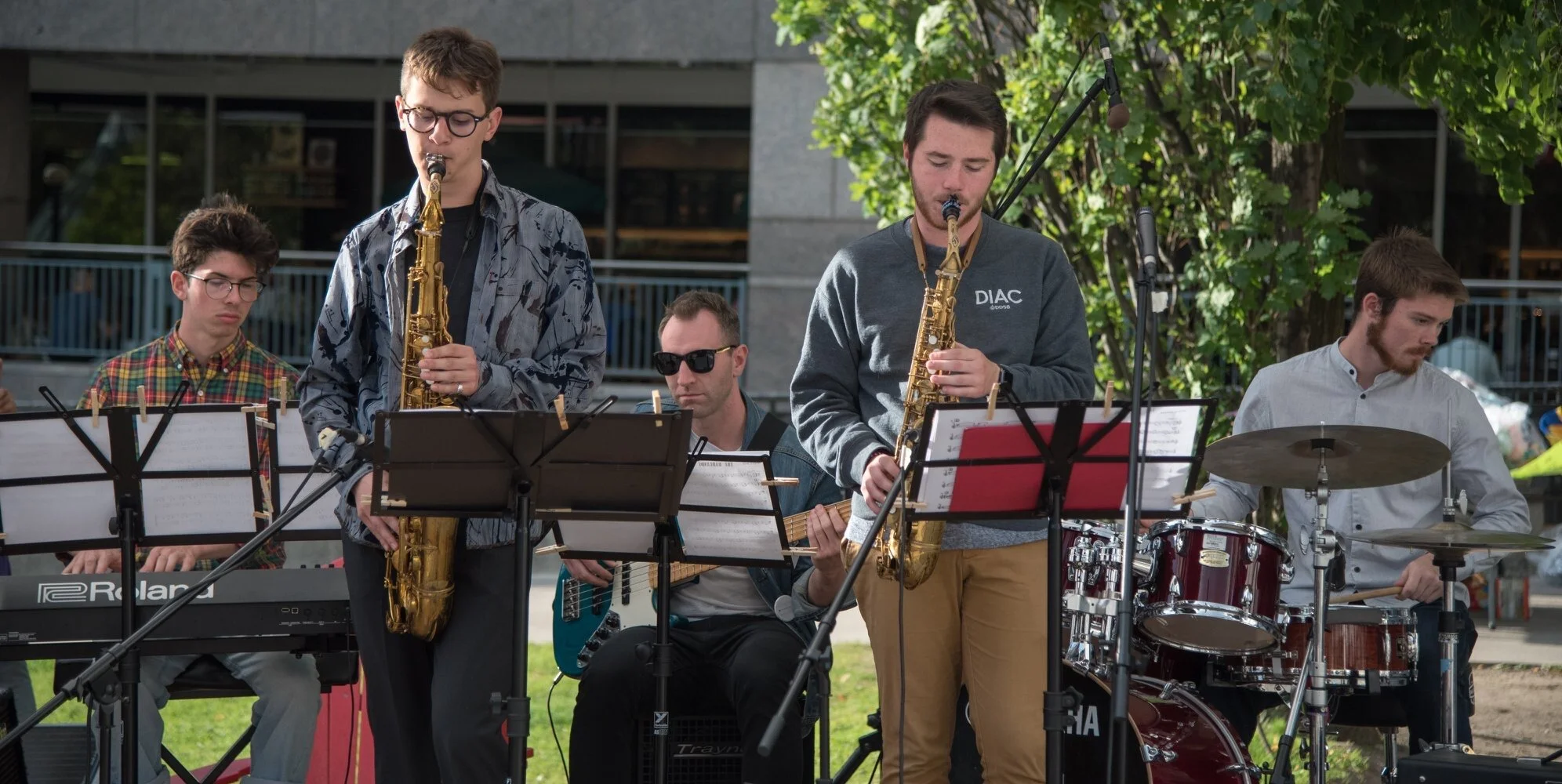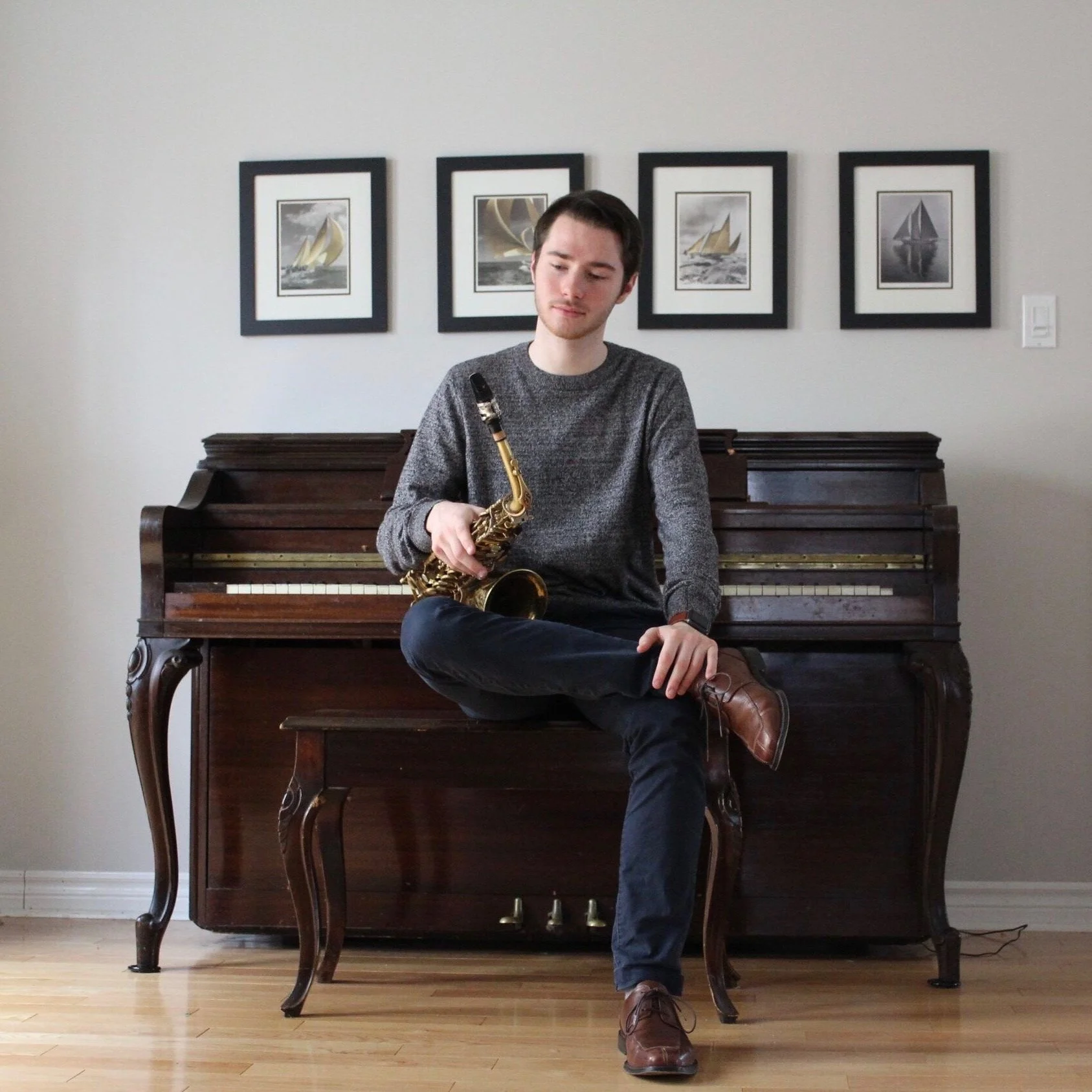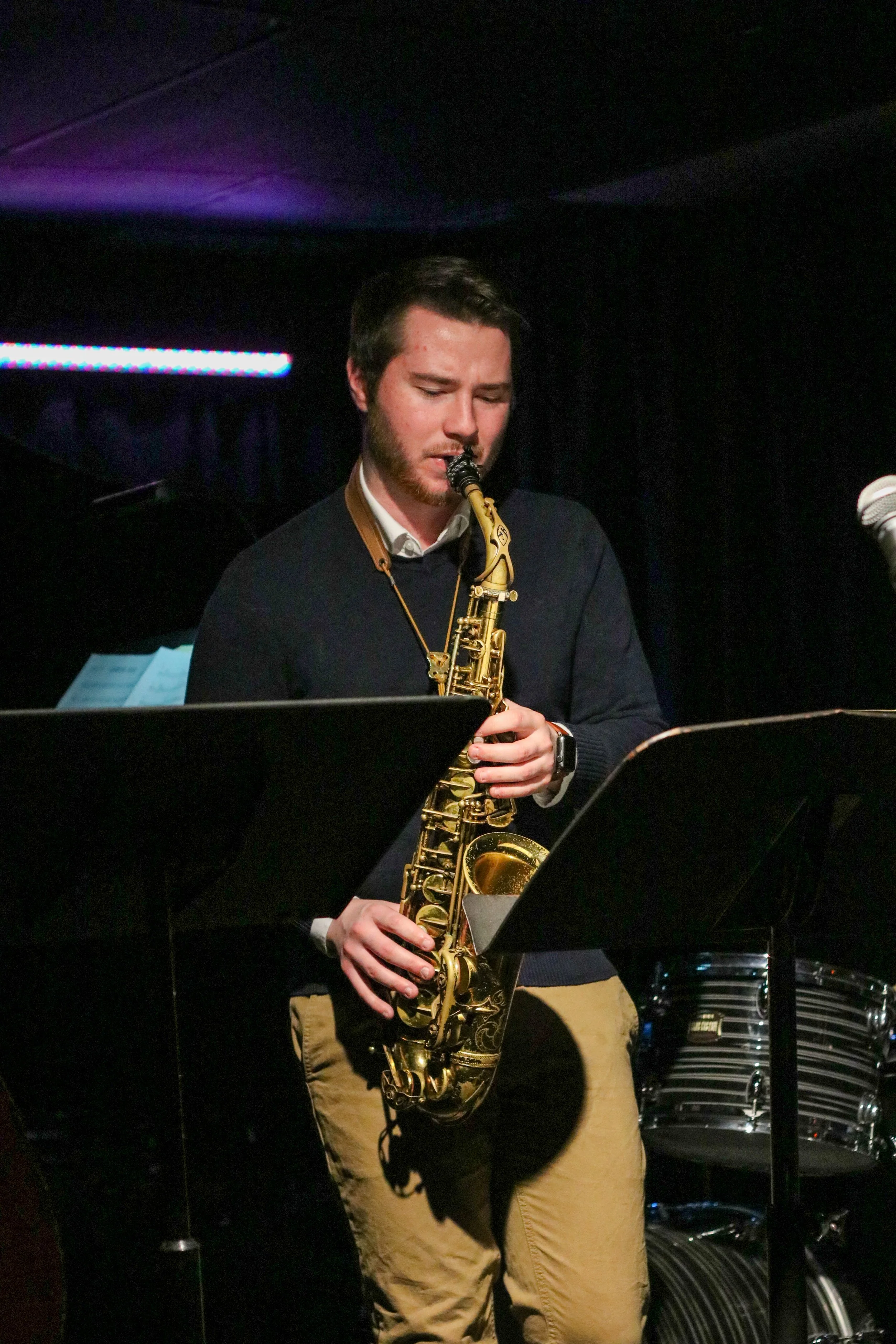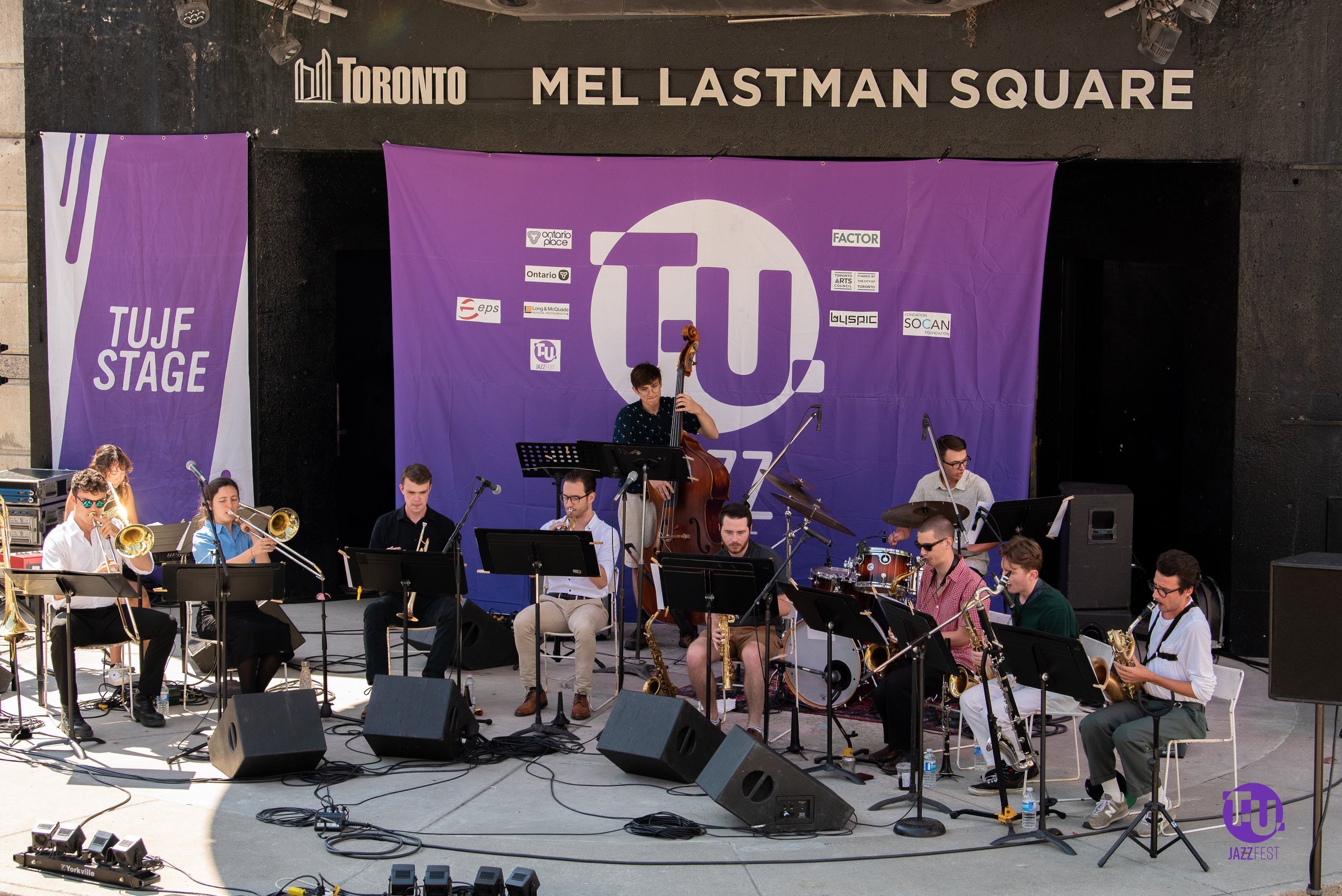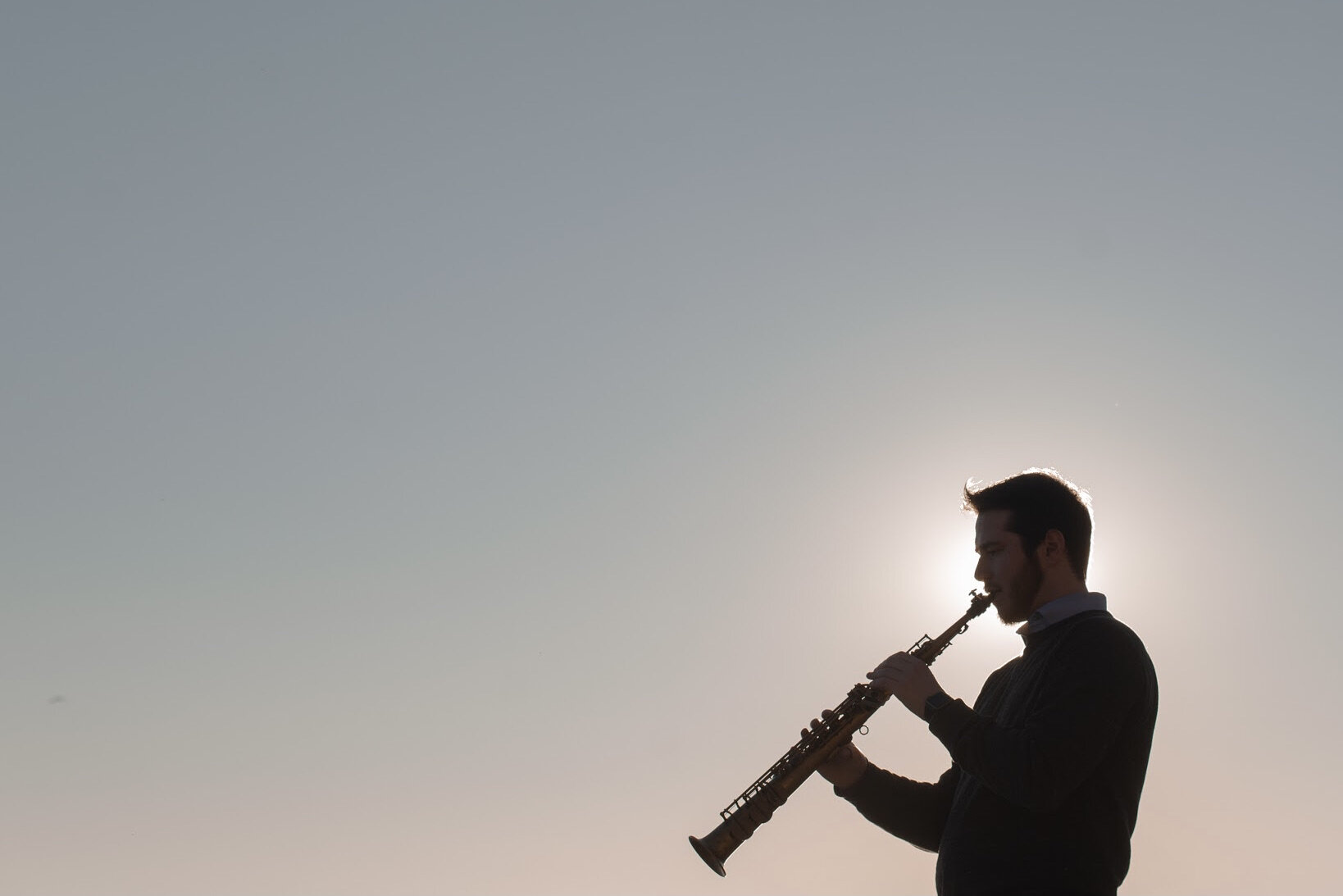
Testimonials
“Thomas Steele’s ‘10Tet’ is a significant accomplishment in composing, arranging and performance from some exceptional young musicians with very bright futures.”
— Tara Davidson, JUNO Award Winning Saxophonist
“Thomas’ recording is filled with interesting compositions and arrangements, fantastic improvisations and solid ensemble work.
It was a joy to listen to from start to finish, and I look forward to hearing what the future holds for Thomas and his outstanding band.”
— Kelly Jefferson, JUNO Award Winning Saxophonist
“Thomas’ recent record, “10Tet”, features interesting compositions as well as good arrangements and high quality ensemble playing and soloing.
I’m looking forward to seeing the development of this ensemble and their future works.”
— Luis Deniz, Grammy Nominated Saxophonist
“Thomas Steele is a rising star on the scene. His new album ‘10Tet’ showcases arrangements and performances that are highly creative, and full of gorgeous harmonies, textures, and rhythmic interplay.
He is definitely an artist to watch out for!”
— Amanda Tossoff, JUNO Nominated Pianist
“Considering his age and how short his career has been thus far - compared to all the legendary artists around - I am already so eager to listen to his future albums. Thomas’ skills are beyond the expectations of any young jazz saxophonist. Thomas knows how to maximize each musicians’ skills and amalgamate them into one pool.
— David Lee, TU Jazz Director
“Thomas Steele’s ‘10Tet’ showcases a bold, new explorer in the contemporary jazz terrain. As a composer and soloist, he steers this giant ship with verve while showcasing some of Toronto’s finest young musicians.”
— Ori Dagan, Global Music Award Winner
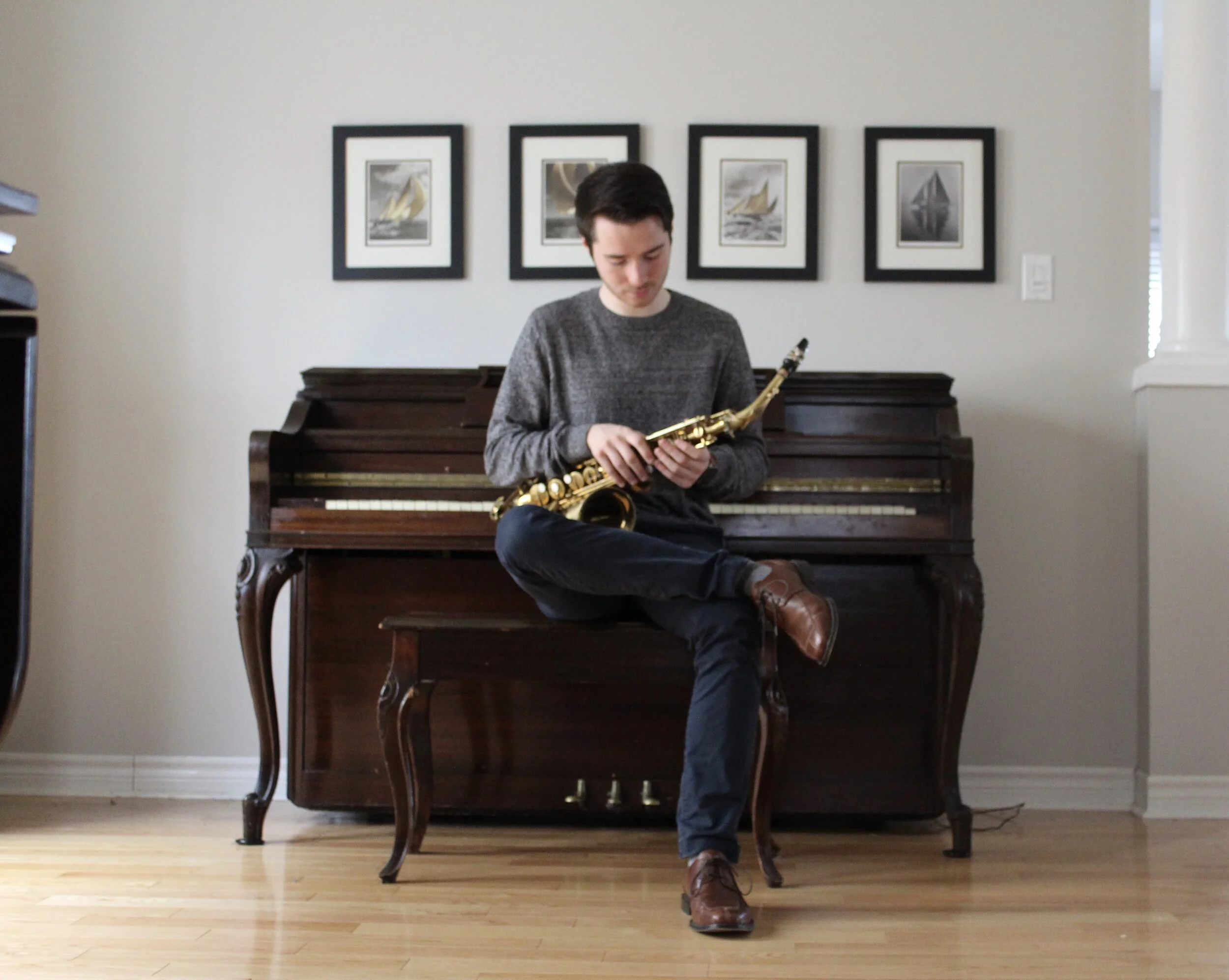
Album Reviews
With this new album, Toronto-based saxophonist and composer Thomas Steele reimagines how a big band can sound. Sounding at times comfortingly familiar and at other times completely foreign, 10Tet pushes the boundaries of contemporary jazz with an experimental take on large ensemble music that’s deep, full and forceful.
— Review by Adam Feibel of Jazz FM (2021)
“Thoroughly polished and staggeringly intricate, Thomas Steele’s latest release is a marvel in all its controlled fury. Unlike his last album The Bends (which featured two chordal instruments in a quintet format), Steele opts to go entirely without comping instruments here. Consequently, his horn section boasts eight parts, and the ensemble still manages to do an effective job of relaying substantial harmonic information thanks to consistently spotless arranging.
Texturally speaking, the music is captivating. Through all the constantly moving structures, stabs and jabs in the arrangements, a persisting atmosphere of cathartic density is built; all while maintaining lucidity in the compositional aspects. The rhythm section of bassist Evan Gratham and drummer Jacob Slous covers a fair bit of ground between them, meshing masterfully with immaculate time feel while laying a foundation of rhythmic clarity for the rest of the group. Also indispensable is the versatile baritone saxophone and bass clarinet playing of Alex Manoukas, which adds an extra dimension of low-end and greatly adds to the overall coherence.
Steele’s bandleading style feels equal parts selfless and distinctive. He can continually achieve a very particular sound out of such unconventional instrumentation, and yet he also gives way for the complete expression of each individual musician. Everyone is given a significant feature at some point, and three of the seven tunes are penned by contributors aside from Steele. Jacob Chung’s February Flowers is a standout.”
— Review by Yoshi Wall of Whole Note Magazine (2022)
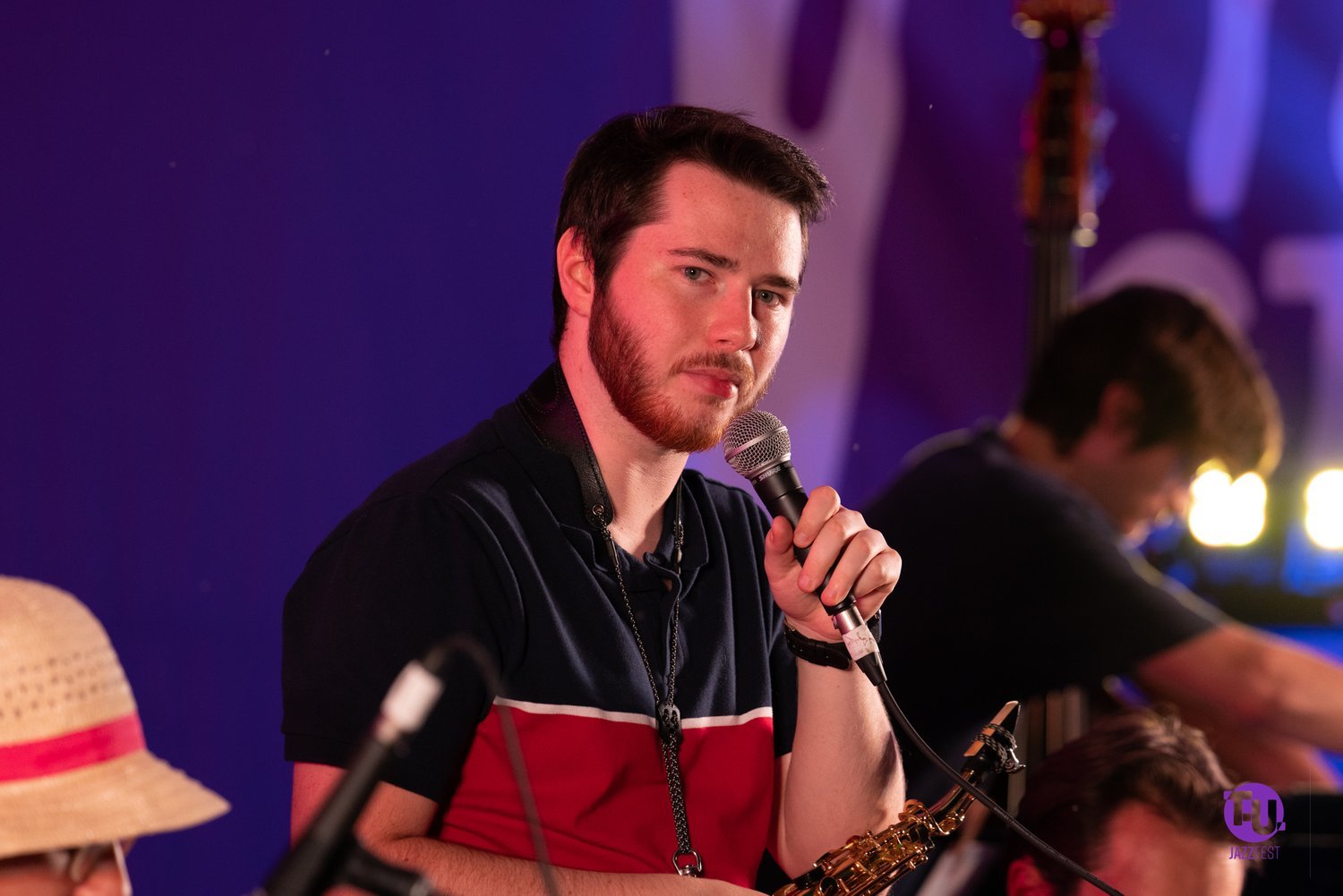
Interviews
Raina: “It sounds like when you’re writing for larger ensembles, you really have to think about music in a different way than with a smaller ensemble.”
Thomas: “Totally. With a chordal instrument — a piano or guitar — it’s easier to have a really grounded sense of the form and the chord changes. So, when we’re playing with just a horn section, a bassist and a drummer, we have to be really deliberate about making sure the harmony is still there. If you take a piano voicing, where there could be major or minor second intervals, and put that into a horn section, it can sound really messy. We have to really experiment with the way we orchestrate for the ensemble, and the way that we write the rhythm, melody and the harmony so that it sounds really cohesive.”
Juliet: "Ten people? That’s brave! Tell us about your piece ‘Deja Vu’.”
Thomas: It’s called Deja Vu. The reason I called it Deja Vu is, as every jazz musician does, I realized I was pulling music from really different spots. I played it with my combo a few times and ended up expanding it for the 10Tet.”
Natalie: “What type of music do you typically create?”
Thomas: “I stylistically more write music in the modern jazz genre. It’s not so straight ahead; it’s more of a contemporary kind of jazz. I use electronics, and some of my other band members and I use different kinds of pedals, pedalboards, and different kinds of non-traditional instrumentation to stylistically sound different than any other band that’s come before us. There’s such pressure nowadays to have a unique and individual voice, and I think that’s important, but I also think that listening to your mentors and finding groups that you like to base off of is important too, at least that’s what I did. I listened extensively to different people that I admired. I bought a bunch of their scores and really analyzed them and thought about how they were making that sound and what they were doing there, and that’s how I led into making the music that I play.”
Emily: “Can you tell us a bit about your 10Tet?”
Thomas: “My 10Tet is a ten-piece jazz ensemble that plays a mixture of straight-ahead and contemporary jazz. Since I began studying jazz, I’ve always been interested in large ensemble music. I drew inspiration from groups such as the Carn-Davidson 9, Maria Schneider Orchestra, and Darcy James Argue’s ‘Secret Society’.
